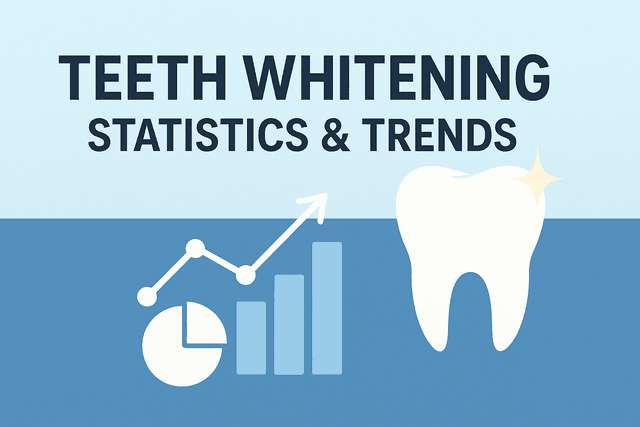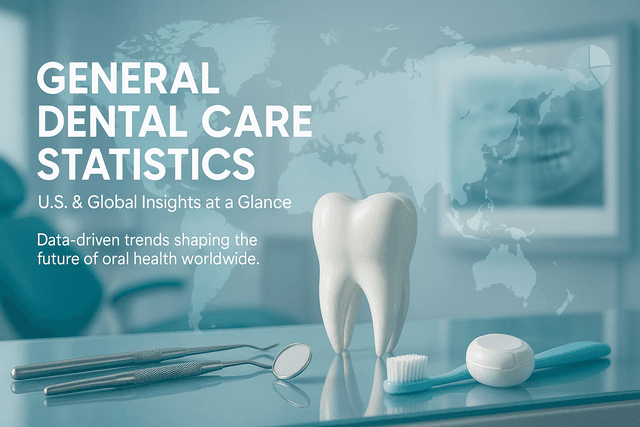Oral Health
How Much Does Periodontal Surgery Cost? A Complete Breakdown
When it comes to dental health, few words spark anxiety like “periodontal surgery.” But if gum disease has taken hold, this procedure might be the key to saving your smile, and your wallet. Understanding the costs involved can help you prepare, plan, and protect both your oral health and your finances.
5 min read
Jul 18, 2025

Nobody wants to hear the word “surgery,” especially when it’s paired with your gums. But when gum disease digs in its heels, sometimes periodontal surgery is the only way to save your smile (and your wallet in the long run). Whether you’ve just heard the term or you’ve been told it’s time to sit down with a periodontist, the big question lingers: how much does periodontal surgery cost?
Well, the short answer is: it depends. But don’t worry, we’ll unpack every dollar and detail in plain English, with zero judgment and a little humor to keep things light. Let’s walk through the ins, outs, and cost ranges of periodontal treatment so you can make smart, confident choices for your dental health.
Understanding Periodontal Disease and Why It Matters
Before we dive into costs, let’s clear the air on what we’re dealing with. Periodontal disease is a more intense form of gum disease. It happens when plaque and bacteria sneak below the gum line and start causing real damage. We’re talking inflamed gums, bleeding, receding gum tissue, and eventually, bone loss.
Mild gum disease, known as gingivitis, is treatable with regular dental cleaning and better dental hygiene habits. But when it advances to periodontal disease, professional help becomes a must.
Left untreated, advanced periodontal disease doesn’t just threaten your smile, it can lead to tooth loss and even increase your risk for other health issues. That’s why periodontal treatment is about more than looking good, it’s about protecting your overall health.
Periodontal Treatment Cost Explained
Here’s the first reality check: the cost of periodontal treatment can vary wildly based on the procedure, your location, and even your dentist or periodontist’s experience level. But let’s break it down.
Scaling and root planing: $150 to $300 per quadrant
Flap surgery: $500 to $1,200 per quadrant
Pocket reduction surgery: $600 to $1,500 per quadrant
Gum graft surgery: $700 to $2,000 per tooth
Osseous surgery: $1,000 to $3,000 depending on the extent
Dental implant (if needed): $3,000 to $6,000 per tooth
Keep in mind, these are averages. The actual cost can vary based on how many teeth need treatment, the stage of gum disease, and whether sedation or special tools are used. In other words, the cost can vary based on your specific mouth situation.
Breaking Down the Surgery Cost for Periodontal Surgeries
Periodontal surgeries aren’t just a one-and-done affair. Depending on how far the gum disease has progressed, you might need multiple visits or procedures. Some people only need flap surgery in one area. Others need a combination of pocket reduction surgery, osseous surgery, and even gum grafts.
The good news? Once the active disease is treated, you’re on the road to healthier gums, and possibly fewer costs down the line. Preventing the progression of the disease with proper dental hygiene is a huge win.
How to Lower the Cost of Periodontal Treatment
The treatment cost can feel steep, especially if you weren’t expecting it. But don’t panic. There are ways to bring that number down:
Ask about insurance plans your dental office accepts.
Look into dental insurance plans that offer better coverage for periodontal disease treatment.
Use a health savings account (HSA) or flexible spending account (FSA) if available, these can pay for qualified dental care, including surgery.
Consider dental schools or clinics offering affordable periodontal care under the supervision of licensed professionals.
Ask for a treatment plan with phased scheduling, so you can spread out costs over time.
Payment plans are offered by many dental offices, don’t be afraid to ask.
When Gum Surgery Becomes Necessary
Gum surgery isn’t something anyone gets excited about, but sometimes it’s the only way to treat gum disease before it leads to serious dental issues. If gum disease has damaged the bone and gum tissue around your teeth, gum surgery becomes not just helpful, it becomes necessary.
The type of surgery you need will depend on your diagnosis and treatment plan. Procedures like flap surgery are designed to clean deep below the gum line. Osseous surgery helps reshape bone that’s been damaged. Gum graft surgery covers exposed roots and helps regenerate lost gum tissue.
So yes, surgery cost is an investment, but it's one that can save your teeth and prevent more expensive dental treatment down the road.
Treating Periodontal Disease Before It’s Too Late
Treating periodontal disease early can save your smile, and your budget. The longer you wait, the more damage gum disease can do. Early signs of gum disease include:
Bleeding when brushing
Swollen or tender gums
Gum recession
Loose teeth
Persistent bad breath
If any of these sound familiar, it’s time to schedule a visit with a dental professional or periodontist. Waiting can turn a manageable condition into a costly one.
Preventing the Need for Advanced Periodontal Treatment
The best way to manage periodontal disease treatment cost is to avoid surgery in the first place. Sounds obvious, but it’s easy to let routine dental care slide. Here’s how to stay ahead:
Keep up with regular dental check-ups and cleanings
Practice good dental hygiene at home (yes, flossing counts!)
Don’t ignore the early signs of gum disease
Use tools like electric toothbrushes and antimicrobial rinses
Eat a diet that supports good oral health
Good oral habits can mean the difference between a $150 cleaning and a $2,000 gum surgery.
What You Should Know About the Cleaning Cost Before Surgery
Before jumping into surgery, most patients will undergo a deep dental cleaning (scaling and root planing). This isn’t your average polish-and-go. It goes under the gums to remove the gunk causing all the trouble.
This cleaning cost usually runs around $150 to $300 per quadrant, and it’s often the first line of defense in any periodontal treatment plan. It’s also something your dental insurance might cover more generously, especially if gum disease isn’t too advanced.
Dental Implants and Periodontal Disease
Sometimes, gum disease has done so much damage that teeth can’t be saved. That’s where dental implants come in. But here’s the catch, if your gums and bone aren’t healthy, you may need periodontal surgeries before implant placement is even possible. Learn more about dental implants after gum disease before committing to treatment.
Implants can restore your smile, but they come with their own costs: usually $3,000 to $6,000 per tooth. That said, they’re durable, natural-looking, and can last decades with the right care.
Choosing the Right Treatment Option and Dental Professional
When it comes to periodontal, it’s not just about the numbers, it’s about choosing the right treatment option and the right provider. Whether you’re working with a general dentist or a board-certified periodontist, their experience and approach matter.
Look for someone who will walk you through your diagnosis and treatment with honesty, not pressure. Ask questions. Get a second opinion if needed. Your mouth, your rules.
What Is Periodontal Treatment and What Are Your Options?
There’s no one-size-fits-all solution. Periodontal treatment ranges from deep cleanings to surgical procedures. The right treatment plan depends on the severity of the disease, the number of teeth involved, and how much damage has occurred.
Some common treatment options include:
Scaling and Root Planing (a.k.a. deep dental cleaning): This is the go-to first step for treating moderate to severe gum disease.
Flap surgery: A surgical option where incisions in the gum are made to clean deep pockets.
Pocket reduction surgery: This reduces the depth of gum pockets that collect bacteria.
Gum graft surgery: Used when gum recession has left tooth roots exposed.
Osseous surgery: Removes damaged bone and smooths surfaces to prevent further infection.
Dental implant placement: Sometimes used when teeth have been lost due to periodontal disease.
So yes, periodontal treatment can range from non-invasive to surgical, and your costs will follow that curve.
Why Does the Average Cost Feel Confusing?
If you’ve ever Googled “how much does it cost,” you probably noticed there’s no simple answer. The average cost of periodontal surgery doesn’t reflect all the variables at play.
For instance:
The location of the dental office can affect pricing. A periodontist in a high-cost urban area will likely charge more than one in a smaller town.
The extent of the periodontal disease (aka how bad things have gotten) will impact how long and complex the surgery needs to be.
The number of teeth requiring treatment drives cost, some charges are per tooth, some per quadrant.
Your dental insurance provider may or may not cover periodontal care, depending on your dental insurance plan.
What Does Dental Insurance Cover?
Dental insurance is helpful, but it’s not always as generous as you’d hope. Many dental insurance plans cover basic services like routine dental cleanings and X-rays, but when it comes to periodontal treatment? That’s when you’ll want to look closely at your insurance coverage.
Some plans will cover the cost of periodontal treatment partially, often up to 50% after your deductible. Others may classify it as a “major service,” which might only be covered once every few years. It all depends on your plan.
Make sure to ask your provider if they cover periodontal procedures like flap surgery or pocket reduction surgery. You can also ask your dental office to submit a pre-authorization request so you’re not hit with surprises.
Read Next
Related Posts

Oral Health
Teeth Whitening Statistics & Trends
Teeth whitening has grown from a luxury procedure to a mainstream cosmetic treatment accessible to people worldwide. Consumers today are investing in their smiles as much as they invest in skincare, haircare, and personal style. Whether it’s for a job interview, a wedding, or just personal confidence, teeth whitening has become a regular part of aesthetic self-care.
4 min read
Aug 21, 2025

Oral Health
General Dental Care Statistics (U.S. & Global)
Dental health plays a crucial role in overall well-being, yet millions worldwide face barriers to routine care. This detailed statistics guide breaks down current dental health trends, costs, and challenges both in the United States and globally.
5 min read
Aug 21, 2025

Oral Health
Dental Anxiety & Sedation Dentistry Statistics
Dental anxiety isn’t just a personal problem; it’s a public health issue. Millions of people delay or avoid dental care because of fear, resulting in worsened oral health and increased long-term treatment costs. Understanding the statistics, causes, and available solutions like sedation dentistry can help dental professionals create a more empathetic practice while increasing patient retention.
4 min read
Aug 21, 2025
Don’t have time to research every dentist around you?
See why 30k+ patients trusted us